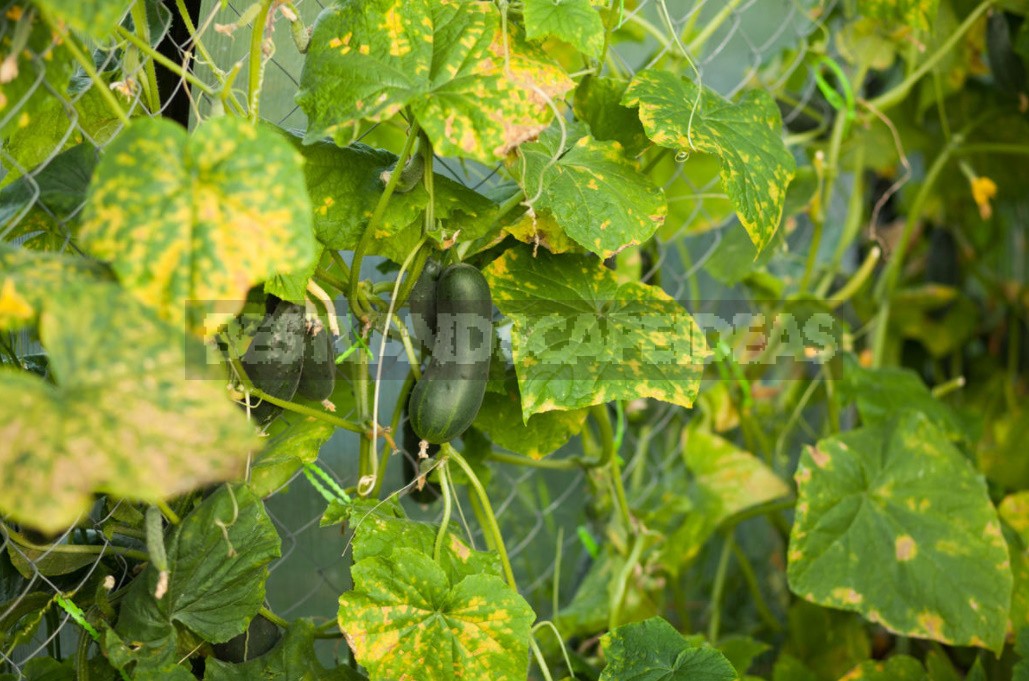
Even experienced gardeners, who are well versed in agricultural technology, regularly have to deal with various cucumber misfortunes. What can we say about beginners in the country business! Unfortunately, neither in the open ground, nor in the greenhouse, cucumbers are not immune from various diseases and pests.
First of all, you need to remember that the root system of the cucumber is weak — the slightest movement of the soil causes the breakage of the hairs, which feed on moisture on the roots. Therefore, it is better to cut weeds at the level of the soil (this inhibits their further growth), and not pull them out. The soil under the cucumbers should not be loosened, and if it is compacted after watering, then it must be mulched, for example, sprinkled with peat on top.
The most common diseases of cucumber
Cucumber has a lot of diseases. Let’s look at the main problems and emergency ways to deal with them.
False powdery mildew
Pay attention to the leaves. If a light border appears on the young leaves, there is a great threat of the disease of false powdery mildew, which quickly develops with high humidity in the air and soil (especially in cold weather). On the adult leaves, on the upper side along the veins, yellowish oily spots are visible, on which there is a whitish-purple coating on the lower side of the leaf. The spots begin to dry out, gradually capturing the entire leaf blade. The process of infection and drying of the leaves is very fast — just a few days later, all the plants in the greenhouse look as if it is deep autumn. Naturally, there can be no question of any fruiting.
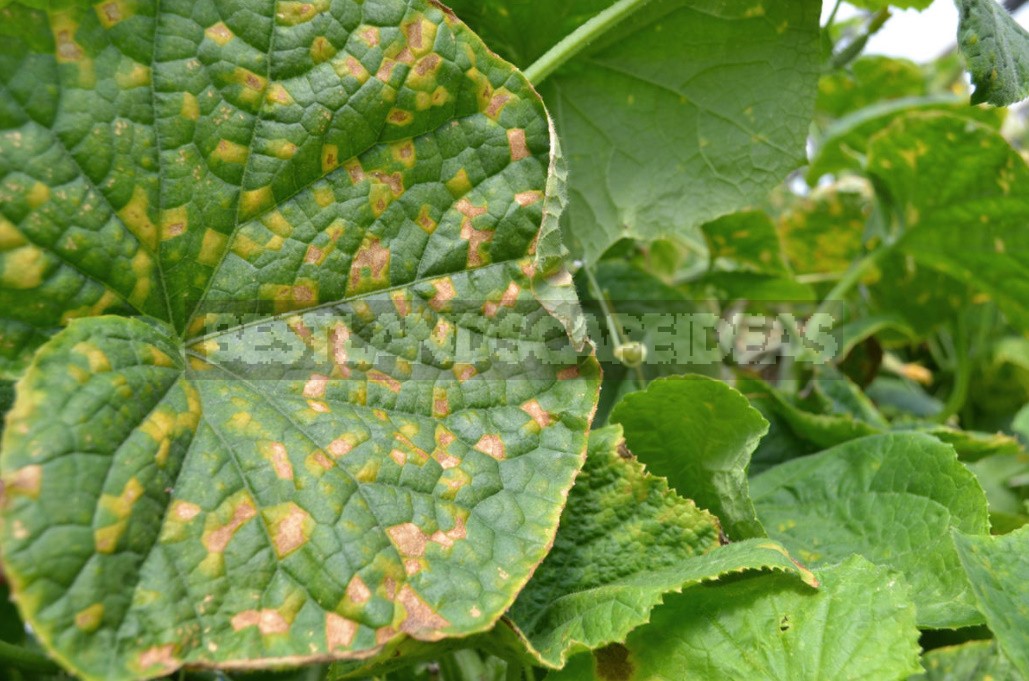
At the first sign of the disease, stop watering, ventilate the greenhouses well, cover the soil under the cucumbers completely with ash, sand or chalk to dry it. The leaves — with oily spots and shrunken-should be removed and burned. Spray healthy leaves with a bright pink potassium permanganate solution to prevent them from becoming infected. Ground cucumbers can be sprayed with chemical poison, so after processing, cucumbers can be collected no earlier than 20 days.
Bacteriosis and stem rot
In cold or cool weather, cucumbers should be watered moderately — and always very warm water (not lower than +25…+30°C). This will protect them from the disease not only with false powdery mildew, but also with rot. The most common disease of cucumbers in greenhouses is bacteriosis. On the leaves, angular yellow spots first appear, which then dry out and turn out. On the underside of the leaf, cloudy pinkish droplets of liquid are visible. The same cloudy droplets appear on the ulcers of the fruit. In wet weather, the disease increases dramatically.
Despite the fact that cucumbers are afraid of drafts, it is necessary to constantly ventilate greenhouses, because even more than drafts, cucumbers are afraid of bacteriosis and stem rot. For processing, use appropriate preparations or an infusion of garlic (200 g of chopped leaves and garlic arrows, pour 5 liters of water, cover, insist for 4 hours and immediately spray the leaves from below).
Anthracnose
Another fairly common disease is anthracnose. It develops after bacteriosis. At first, the disease manifests itself on the leaves (rounded brown spots are formed, which later turn out). Then-goes to the young cucumbers. On the fruits appear deep rounded ulcers with a hard edge, reminiscent of bird biting. In greenhouses, you can use only certain drugs (find out in the specialized stores of your city) or potassium permanganate, after spraying the latter, it is desirable to pollinate the wet leaves with ash, and even better-with dry mustard.
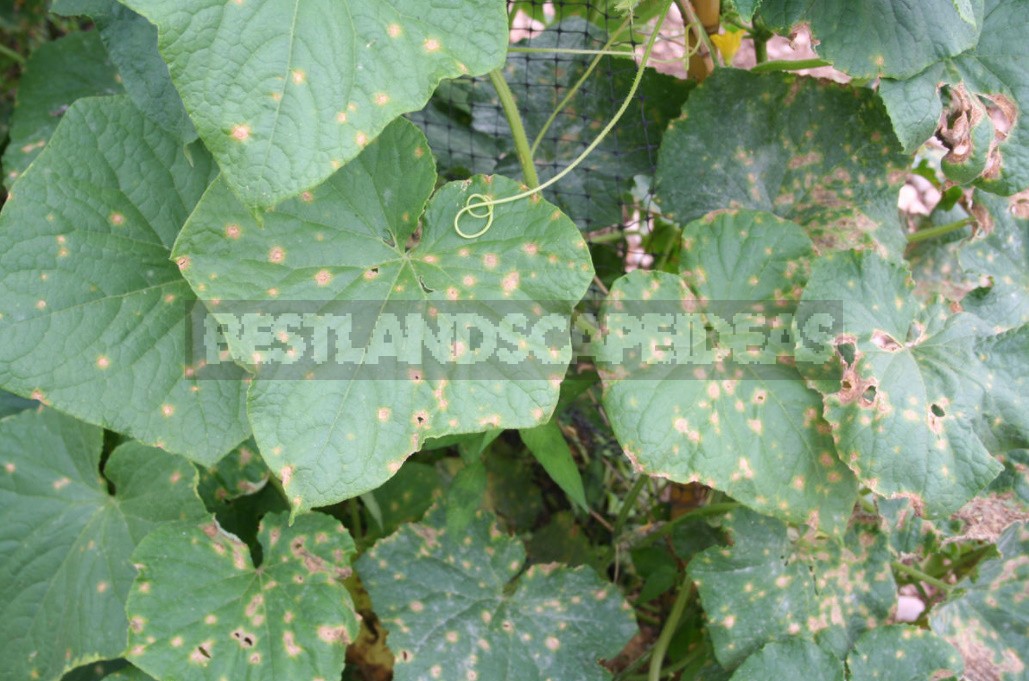
White rot of cucumber
If the stems or petioles of the leaves become soft, covered with a white coating — cucumbers are sick with white rot. Urgently make foliar top dressing: 1 teaspoon of urea, a grain of copper sulfate per 10 liters of water. Stop watering, ventilate the greenhouses, remove the diseased fruits and leaves. Remove the plaque with a dry cloth (or-soaked in a raspberry solution of potassium permanganate), then pollinate with ash or cover with putty made of chalk and potassium permanganate with water. Putty should be pink in color. Do not delay the removal of the plaque until the rot has encircled the stem, otherwise the upper part of the plant above this place will die.
Wilt of the plant: wilt or root rot?
Sometimes there is a wilting of the entire plant. Either this is a viral disease (wilt, then the plant should be removed so that the insects do not transfer the disease to others), or the wilt is caused by root rot. In any case, you must first carefully scrape the soil from the roots. If the root neck is soaked, has a brown color, is rotten, then this is root rot. It often occurs where manure is used.
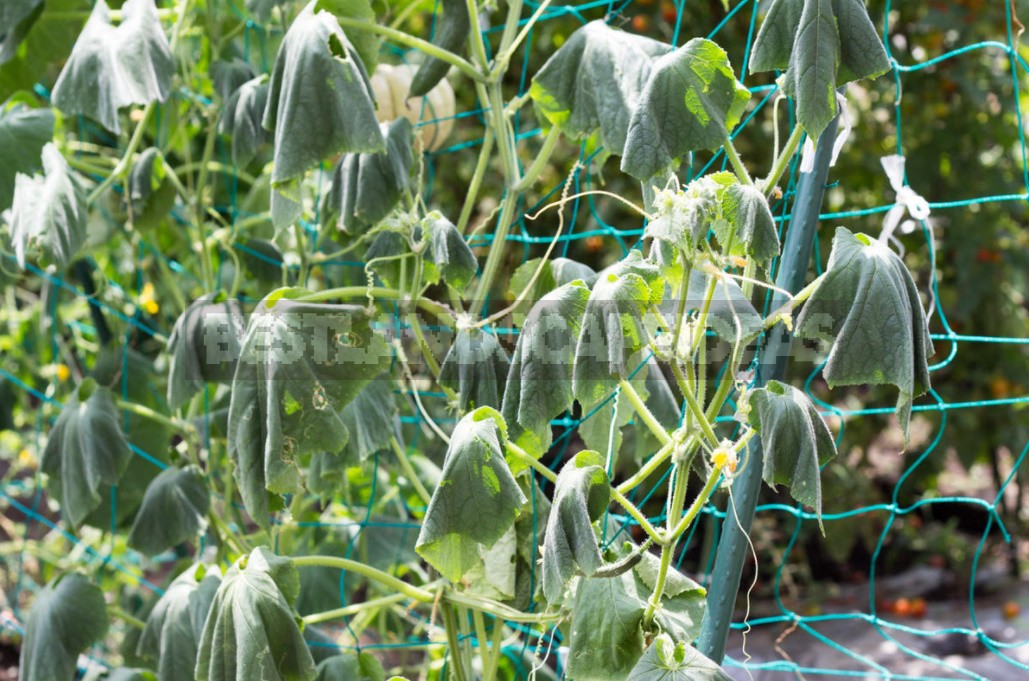
The top layer of soil around the plant should be removed completely. Water the roots with a raspberry-colored potassium permanganate solution to kill the fungus in the soil. Remove the stem from the vertical trellis, lower the lower end to the soil with a ring and tie it to the trellis again. The ring of the stem lying on the ground, sprinkle with fresh nutritious soil on top, moisten it well and make sure that it does not dry out. On the buried part of the stem, new roots will appear, and the plant will be saved; however, the yield will decrease. If the excavated roots have a completely normal appearance, and the plant withers, then this is a wilt.
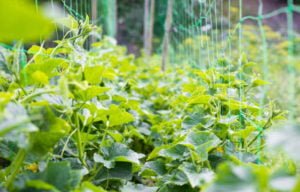
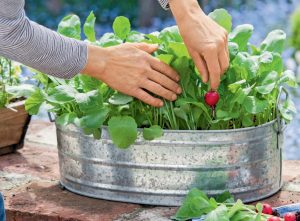
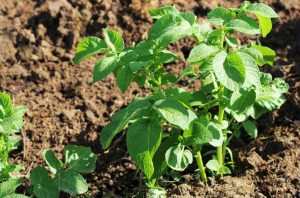

Leave a Reply